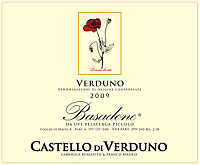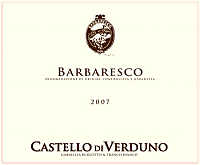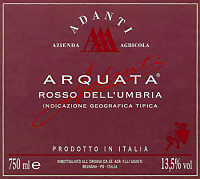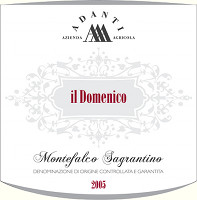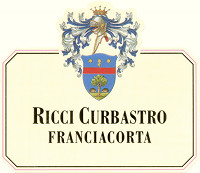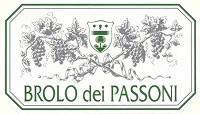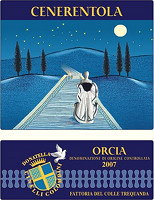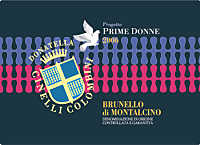|
Sensorial tasting of organoleptic qualities - in our specific case - of wine, is
an exercise done in different ways, according to the type of result of study we
want to achieve. The tasting of a wine can in fact assume many connotations,
from the simple subjective evaluation to asses whether you like it or
not, to the one being the most objective possible having the goal of relying on
models commonly accepted, of course, not to be considered as an absolute
reference and agreed by anyone. The “simple” evaluation of a wine, in order to
asses its subjective agreeability, is characterized by a lower number of
pitfalls than the one having the a critical and analytical goal. The simple
subjective evaluation seems to rely on personal taste only, to what is
considered to be good or bad; nevertheless also this type of evaluation is not
immune to pitfalls, even fatal ones.
Emotional factors, humoral predisposition and involvement determined by
circumstances, are all “pitfalls” which can influence the result of wine
tasting, even at a subjective level. A wine tasted in company of friends, in
occasion of joyous and informal dinners, can favor a better predisposition to
its agreeability. The same wine, tasted on one's own, at the end of a working
day, being in a bad mood and feeling tired, or even after having had an argument
with someone, will make that wine taste less good than the evening spent in
company of friends. Whether being in company with friends is always good, when
you taste a wine this is not always the best condition. In an “informal”
group, all tend to express their opinions, sometimes trying to impose his or her
own to others, ending to influence the judgment of each one.
This effect is pretty known and can happen, for example, in occasion of “guided
tasting” in which a taster conducts the account of a wine in front of a group
of people. His or her account of the sensations perceived from the glass, also
supported by the position of conductor, can influence the perception of
others. In other words, in case the conductor of the tasting says, for example,
he or she is perceiving the aroma of strawberry, the probability the same aroma
will be then perceived by the group is pretty high. For this reason, in group
professional tasting, it is forbidden to participants - during the tasting - to
express any opinion, in order not to influence the work of others. Moreover,
what can be perceived by a subject could pass unnoticed to another, and
vice versa.
|
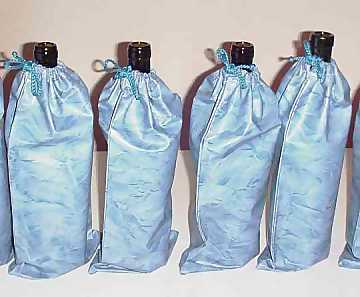 | |
| Blind tasting, by hiding bottles inside
bags, is fundamental for the reliability of the result | |
|
In order to be reliable, the tasting of a wine must be done according to
constant models and conditions. This not only ensures the same evaluation
criteria for each sample - essential, when you decide to evaluate many wine
samples in the course of time - excluding dangerous and extraneous elements
which could influence or alter the result, or conditioning it in any way. For
this reason, professional tasting setups, tends to offer an “aseptic”
working place in order to shield the taster from external factors, made from a
small white table with walls, in order to avoid any visual confrontation
with the other participants to the tasting. The process of sensorial tasting,
when its goal is purely analytical and the most objective possible, requires a
very high level of concentration, while trying to limit as much as possible any
personal consideration. This latter factor, of course, is necessarily present in
case the goal of the tasting is of personal nature.
The occasions of “informal” tasting are of course so many and they should
exclusively be considered for what they really are, that is the possibility of
evaluating a wine with the only goal of getting an idea of it, more or less
concise. There also are cases in which the tasting is highly influenced by
distorting factors such to compromise the reliability of the evaluation.
A typical case is represented by visiting a winery. The hospitable and gentle
condition usually found to welcome us, as well as the conditioning caused by the
view of the places around, generally predispose in a positive manner towards the
evaluation of a wine and to its acceptability as good. In other words, it makes
us feel part of something unique. Moreover, being treated with kindness,
courtesy and with a warm welcome, predisposes - in general terms - to return the
very same type of behavior. The wine we will have in our glass, offered by the
host of the winery, will seem - generally speaking - better than what it really
is, and some of the defects will go unnoticed, also because of a lower
concentration.
The biggest pitfall in tasting a wine in the winery is when it is directly drawn
off from the tank or cask, in particular when you personally take part to this
operation. This kind of tasting - not very reliable because it is a young wine,
not ready yet - is strongly influenced by the involvement on the situation, we
believe to take part to something unique (and it really is) to taste something
special few have the chance to taste. In other words, we are pleased by the
privilege of directly tasting in the winery - and, once again, it is a real
privilege - therefore obfuscating our critical and analytical sense. Tasting
wine in a winery always offers an indicative idea on how that producer works,
not on the real quality of his or her wines, as they are not ready yet. Also for
this reason, every “absolute” evaluation would be very unjust, silly and
useless. They however are important tasting, also in order to understand the
many ages of a wine, in particular, in its very moments of life.
Another pitfall for the evaluation of a wine is represented by wine exhibitions
and wine en primeur events, including the events in which many wines are
available for tasting, sometimes being very different one from each other. When
you taste many wine samples in sequence, the probability of making evaluation
mistakes is very high, and not only because of the progressive diminishing of
concentration. One of the most frequent phenomena occurring in this type of
occasions is the so called halo effect. This inconvenience is pretty
annoying and influences the evaluation and the perception of wines tasted in
sequence, also in a very prejudicial way. The halo effect is the conditioning
caused by the tasting of a wine on the next one. In other words, in case in a
wine we perceive a strong acidity and a remarkable structure, the next one will
tend to disappear in our mouth, it will taste like a weak wine, with no body,
flat.
The halo effect can occur - in a more or less determinant way - every time we
are going to taste a sequence of wines. For this reason, in professional
tasting, in order to make it the most reliable possible, no more than eight
wines are hardly tasted for each session. A remedy to limit (but not to
completely avoid) the consequences of the halo effect, is to “clean” the oral
cavity at the end of each tasting. This can be done by chewing a small piece of
bread, “neutral and insipid” - such as the one made in central Italy, in
Umbria and Tuscany, for example - followed by a rinsing of the mouth with some
water. The tasting of a series of red wines causes a progressive
“desensitization” of taste buds caused by the precipitation of tannins which,
by bonding with mucin, a protein found in saliva, cover the surface of the
tongue. This phenomenon can be observed by the blackish coloration of the
tongue and which can be in part eliminated by chewing a small piece of bread.
The effect of alcohol is another pitfall occurring in the tasting of a series of
wines, in particular when they are being swallowed and not expelled from the
mouth. The same problem is found in the tasting of wines having a strong
acidity, also in this case classified as halo effect. A wine with a
remarkable quantity of alcohol or acid (technically defined as “crisp”) will
make the next wine having a “round” character, taste as flat and dull. The
progressive intake of alcohol, in case wine samples are being swallowed, because
of the known effects caused to the organism, tends to weaken the sensitivity of
sense organs, last but not the least, concentration as well. For this reason, it
is always good to take a long break, of about one hour, after having tasted a
series of wines made of more than eight samples. Not only a relax for the senses
- giving them the possibility to recover their sensitivity - but also to
attenuate the effects of the intake of alcohol.
Sensitivity is also determined by the moment of tasting. Both the sense of smell
as well as the sense of taste, are more receptive in the morning, in
particular in the moments preceding lunch - that is when hunger is higher -
while they become less sensitive at the end of a meal. At the beginning of a
meal, that is when hunger is higher, flavors and aromas tend to be more
appealing and positively perceived, whereas at the end of the meal, when hunger
is replaced by satiety, the use of senses and the act of eating, can also cause
a sense of nausea. For this reason, it is always not advised to taste wines soon
after meals and - in case we need to do that - it is advised to wait at least
three hours before pouring some wine in the glass and to pass it through the
examination of our sense. The best moment for tasting is in the morning, while
however paying attention not to taste more than 8-10 samples per session.
Tasting a sequence of wines, such as in case of contests or critical
evaluations, should always be done blind, that is without knowing in
advance the name of the wine or the producer. This presupposition is essential
in order to get a reliable evaluation, as knowing in advance the wine you are
going to taste introduces extremely prejudicial factors for the result. When you
“blind” taste a wine, as well as not providing any element about the wine to
be evaluated, it is always advisable to hide the bottle from the view of the
taster, even better, to serve the glass filled with wine. The sight of the
bottle is in fact a prejudicial element as from its characteristics, and from
its shape, the taster could get some elements about the identification of the
wine. For example, the Bordelais bottle is usually associated to full bodied
red wines, whereas the Burgundy type is usually reserved to crisp and elegant
red wines, such as, for example, the ones produced with Pinot Noir.
For this reason, it is always better to hide the shape of the bottle by
putting it in a wide bag, whereas it should be avoided to wrap it in aluminum
foil: you can hide the label, but not the shape. Hiding the bottle inside a bag
it is not however completely reliable. For obvious reasons, a part remains
uncovered - the neck of the bottle and the opening - parts which can be
sometimes personalized by producers with absolutely “recognizable” elements
and frequently associated to a specific area. On this regard, we should
consider, for example, a Burgundy bottle and an Albeisa bottle: the shape is
pretty similar, however the opening is quite different, therefore, recognizable.
The best way, as well as reliable, is to serve to the taster the glass in which
was been previously poured the wine away from his or her sight. In any case,
tasting a wine of which is known in advance the type, producer, production area
or any other identifying element, does not provide reliable results, not even
critical ones, as it is highly influenced by prejudicial factors.
|




